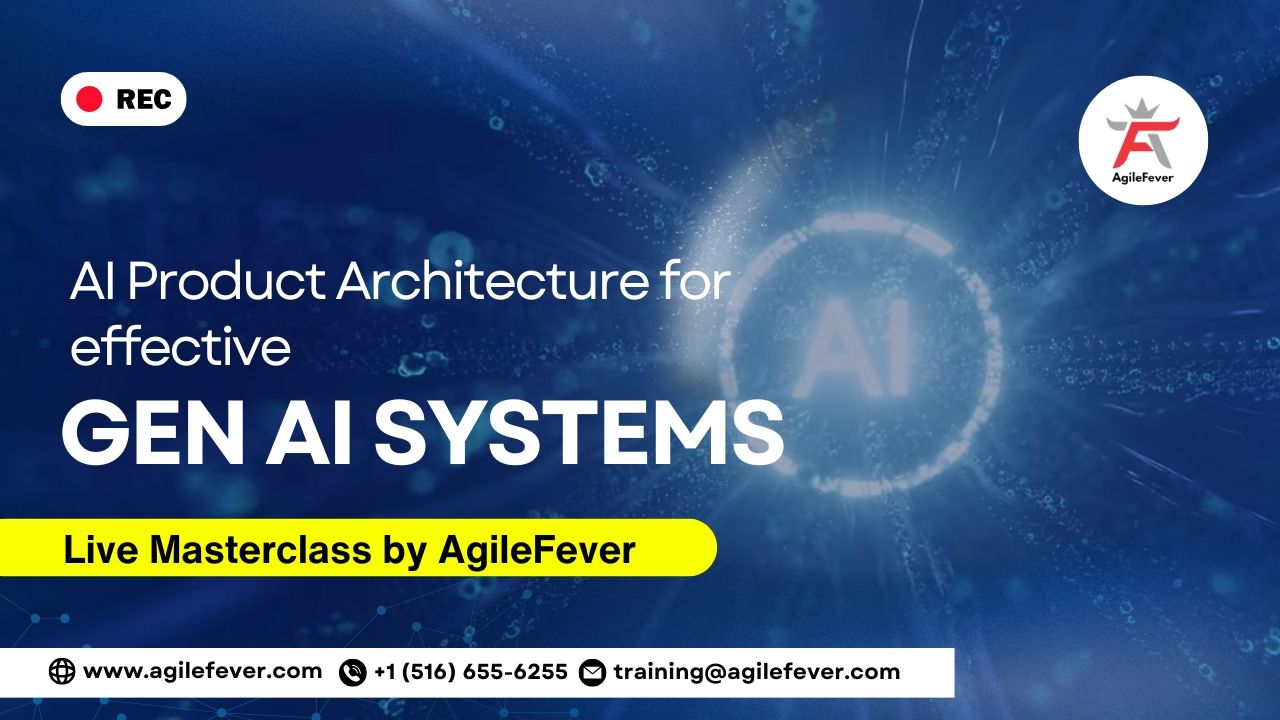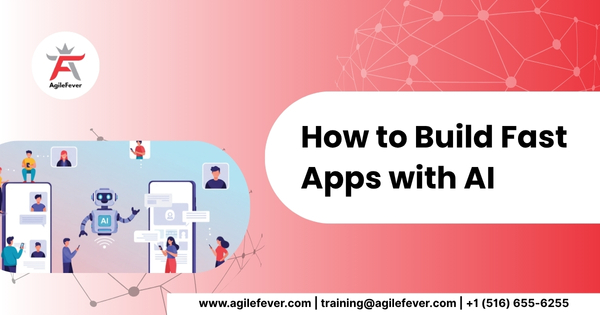Generative AI (Gen AI) has moved from an exciting experiment to a foundational technology, yet many companies are finding that their projects—the ones that work beautifully as a Proof-of-Concept—falter when moving to production. The key difference isn’t the model itself, but the scaffolding supporting it. This is where a robust AI Product Architecture comes in.
In this first part of the AgileFever masterclass, we explore the theoretical but vital framework for building effective Gen AI systems. We will outline the critical differences from traditional software and detail the essential components you need to get your AI project right, avoiding the common pitfalls of failed PoCs.
The Core Difference: Traditional vs. AI System Design
A common mistake is trying to shoehorn an AI product into a traditional software architecture. The unique nature of AI—its dependence on data drift, model retraining, and real-time inference—demands a dedicated approach.
| Architectural Aspect | Traditional Architecture | AI Product Architecture |
| Core Focus | Business Logic & Code Stability | Data Flow, Model Health & Deployment |
| Deployment | CI/CD | MLOps (Model deployment and monitoring) |
| Success Metric | Functionality & Uptime | Model Performance & Business Value |
| Key Challenge | Code Bugs | Data Drift & Model Decay |
Understanding this separation is the first step towards building an end-to-end, production-ready system.
The Four Pillars of Effective Gen AI System Design
To ensure your AI system is scalable, observable, and maintainable, the masterclass emphasizes four foundational pillars (often discussed in the context of MLOps and System Design):
-
Data Ingestion and Management: Defining the pipelines for collecting, cleaning, and labeling the diverse data required for Gen AI models.
-
Model Development and Training: The selection of the right tech stack, experimentation, and the use of design patterns to ensure your models are production-ready.
-
Orchestration and Deployment: Managing the flow of the entire system—the decision-making, monitoring, and interaction between various AI components (e.g., multiple LLMs, knowledge retrieval).
-
User Experience (UX) and Integration: Seamlessly integrating the AI output into the end-user application to maximize usability and value, often through tools like LlamaIndex or frameworks that handle retrieval and RAG (Retrieval-Augmented Generation).
Tools and Frameworks for Orchestration
Moving from a theoretical understanding to practical implementation requires the right toolchain. The masterclass highlighted several open-source orchestration frameworks that are essential for developing production-ready systems and handling the complexity of modern Gen AI workflows:
- Dify: A platform designed to help users quickly create and run AI applications.
- LangFlow: A low-code visual interface for building and deploying LangChain-powered applications.
- Reflex: A framework for quickly building web apps in Python.
These tools help manage the intricate data flows and logic necessary for sophisticated applications like co-pilots, custom chatbots, and advanced content generators.
What’s Next? Practical Demos in Part 2
This session provided the critical theoretical aspects and system design principles. To see these principles in action, ensure you mark your calendar for Part 2 on December 18th.
The next session will focus entirely on the practical part, including live demonstrations of how to utilize orchestration tools like LangFlow and Dify to build a real-world Gen AI application.
PDFs and Resources
Download your free pdf resource here: AI Product Architecture for GenAI_Slides (1)
Tools: Resource 1, Resource 2
Watch Part 1 recorded session here:
Check out our Free Masterclasses and register for Part 2.



